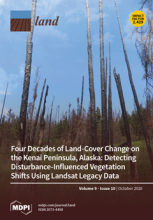Land Library
Welcome to the Land Portal Library. Explore our vast collection of open-access resources (over 74,000) including reports, journal articles, research papers, peer-reviewed publications, legal documents, videos and much more.
/ library resources
Showing items 1 through 9 of 9.The purpose of this research is to better conserve biodiversity by improving land allocation modeling software. Here we introduce a planning support framework designed to be understood by and useful to land managers, stakeholders, and other decision-makers.
In line with the Urban Agenda for the EU, this article highlights the importance of local actions in the conservation of biodiversity, both through specific activities and by increasing the availability of information.
Many Philippine species are at risk of extinction because of habitat loss and degradation driven by agricultural land use and land-use change. The Philippines is one of the world’s primary banana and pineapple producers.
Amid climate change, biodiversity loss and food insecurity, there is the growing need to draw synergies between micro-scale environmental processes and practices, and macro-level ecosystem dynamics to facilitate conservation decision-making.
Insects, the most diverse and abundant animal species on the planet, are critical in providing numerous ecosystem services which are significant to the United Nation’s Sustainable Development Goals (UN-SDGs).
Agricultural landscapes in the Mediterranean region may be considered as social-ecological systems that are important for biodiversity conservation whilst contributing to a wide range of ecosystem services.
Despite the global implementation of rock-rubble groyne structures, there is limited research investigating their ecology, much less than for other artificial coastal structures.
Numerous industrial pits are discarded after their exploitation in every part of the world. Humanity both transforms the original morphology of the landscape, due to industrial activity in the territory, and, at the same time, rejects this "new" situation.
The aim of this research was to assess differences in the quantity and quality of herbage and invertebrate generalist predator abundance among permanent and temporary pastures.




